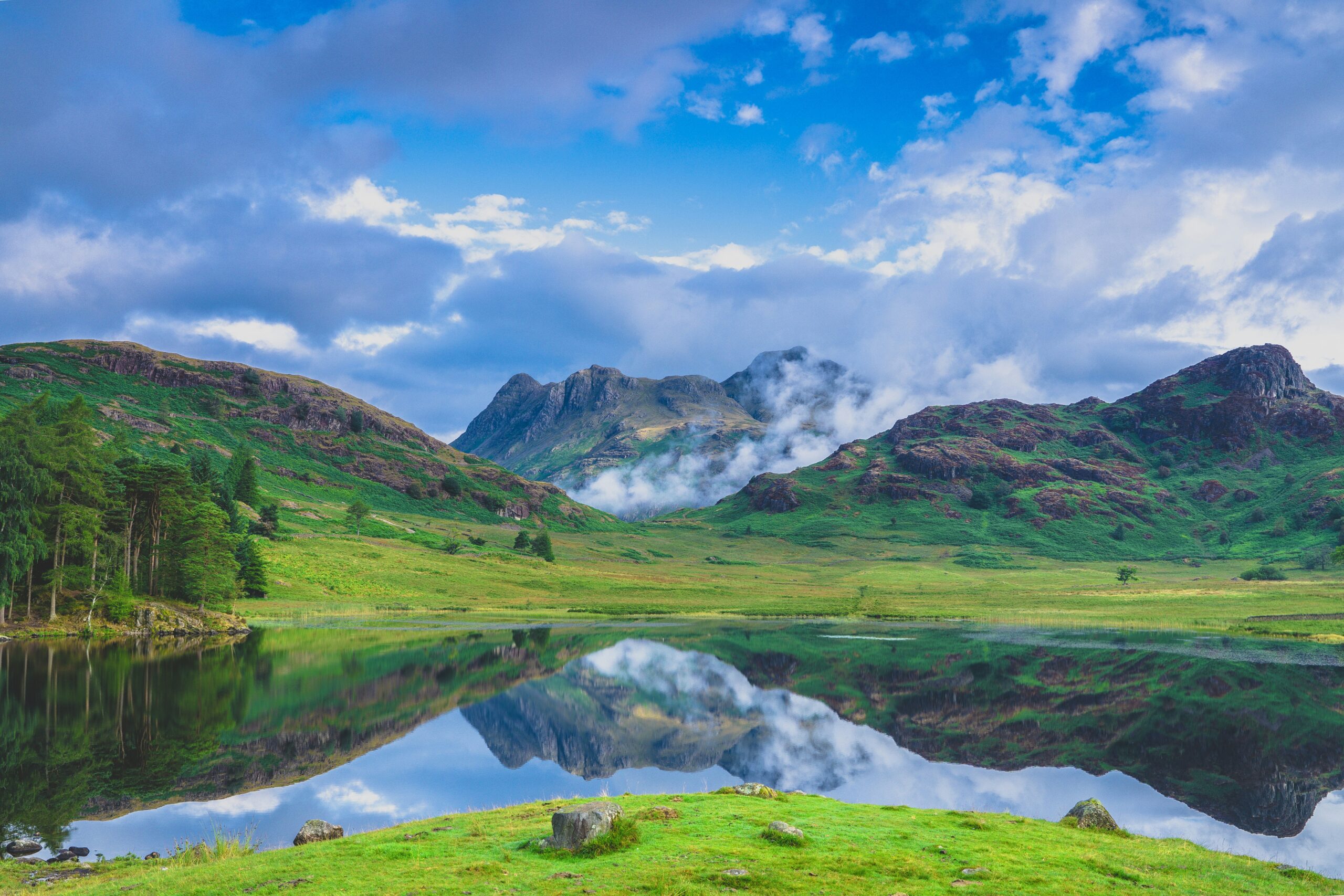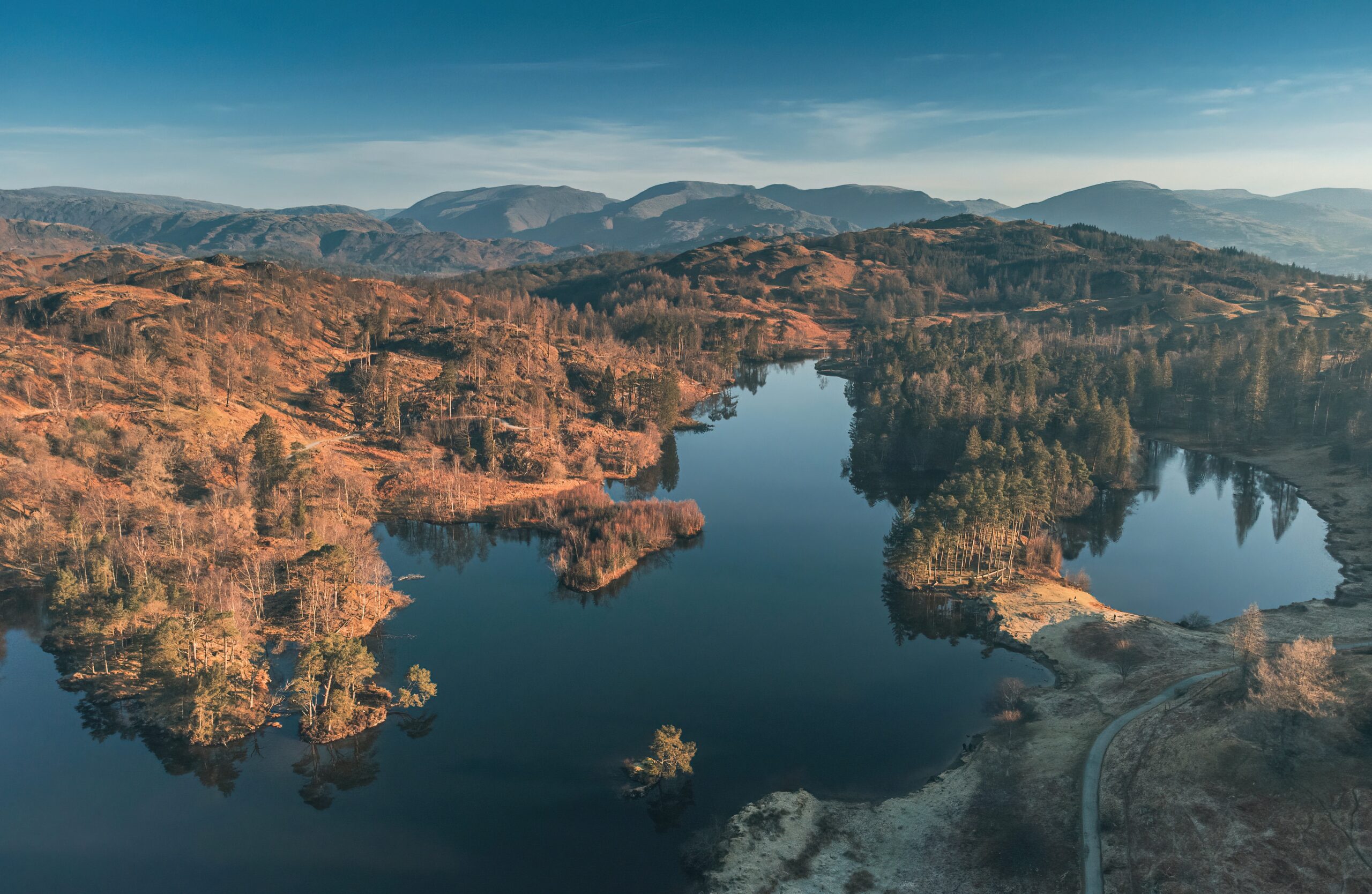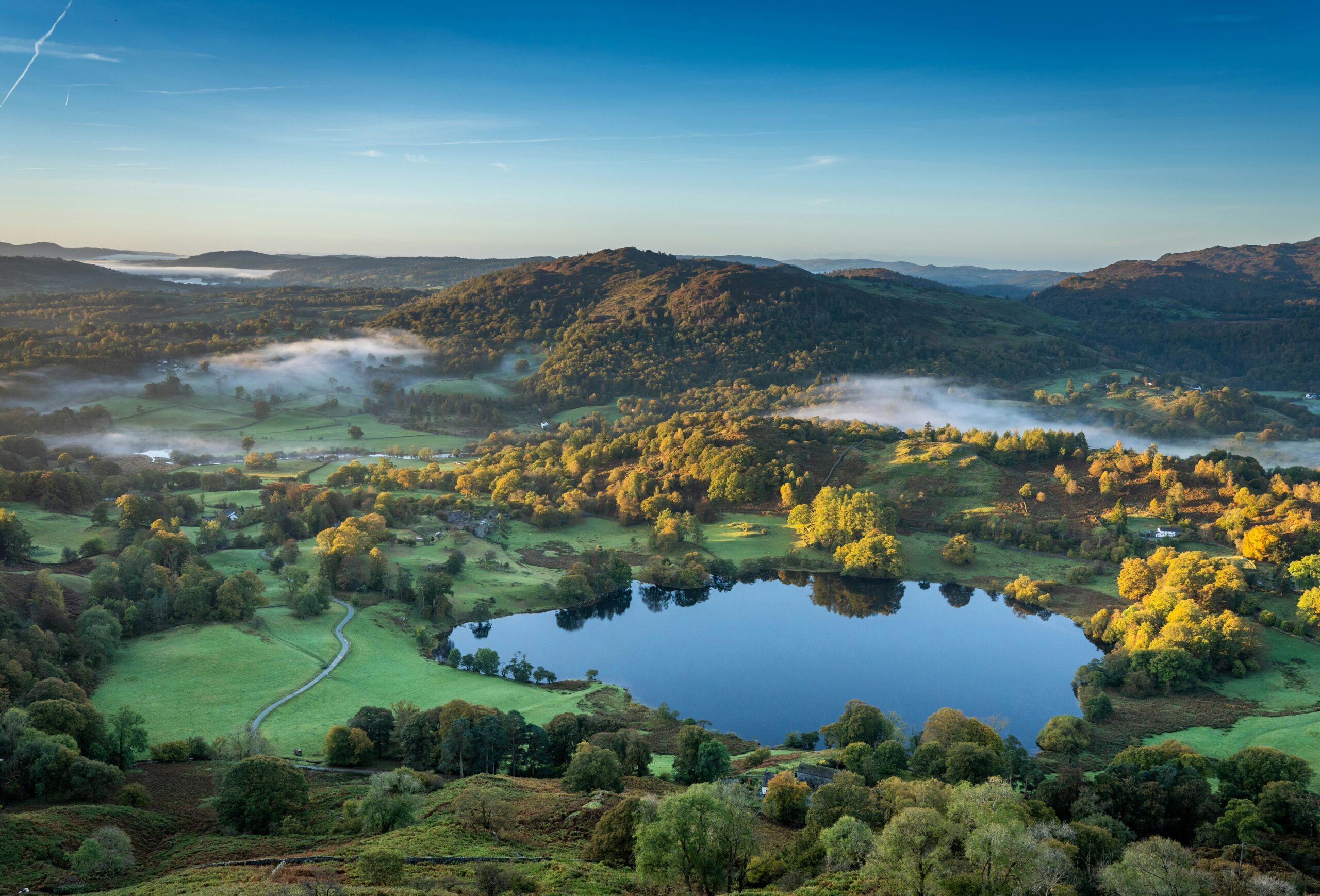Dotted around the mountains of the UK are the secluded bowls of mountain lakes, more commonly known as tarns. These mountain lakes are sheltered and high, providing habitats for animals and plants and enriching the landscape for mountain walkers. They all have their own unique character and are perfect for a day of hiking to, swimming in, or simply relaxing at the surrounding scenery.
The Lake District, a jewel in Cumbria’s crown, is renowned for its breathtaking landscapes, rolling hills, and, of course, its bodies of water. There are an estimated 197 tarns in the Lake District. Some are well known while most are less so, but they all have the following in common; they require a good walk to get there. In fact, many walks in the Lake District fells include a visit to at least one tarn. Not only do they add to the scenery, but they are also popular to swim in.
As a starting point, we’ve listed 5 of our favourite tarns in the Lake District which are worth visiting. We won’t claim they’re the best as we haven’t visited all 197, however we do know they are definitely worthy of your time, and you won’t be disappointed if you visit them. Let’s dive into the world of Lake District tarns and discover why these small, hidden bodies of water are so special.
Used as the name for a small body of water, the word tarn derives from the Old Norse word tjörn meaning a small mountain lake.
The tarns in the Lake District were formed through glacial erosion and deposition during periods of glaciation. Both corries and tarns are key features in glaciated landscapes, providing evidence of past glacial activity and contribute to the dramatic scenery often found in mountainous regions.
Corries, also known as cirques, are armchair-shaped hollows found on the sides of mountains. They form when snow accumulates in a depression and compacts into ice, creating a small glacier. Tarns are small mountain lakes that form in the basins of corries after the glacier has melted.
As the glacier retreats, it leaves behind a depression that can fill with meltwater, rainwater, or groundwater, creating a tarn. The water in tarns is typically clear and cold, and these lakes are often surrounded by steep rock walls and moraines, which are accumulations of debris left by the glacier.
Without getting too technical, a lake is a static or slow-moving basin of water surrounded by land apart from the river or rivers that flow in and out of it. By definition a tarn is simply a small glacial lake found higher up in the mountains. Without river water flowing into it, tarns can also be more stagnant. So, there’s really not much difference between the two.
Blea Tarn is probably one of the most photographed tarns in the Lake District, and for good reason. Located 9 miles from Ambleside between the Little Langdale and Great Langdale Valleys, Blea Tarn is in the heart of the dramatic central Lake District fells, looking up towards the famous Langdale Pikes with Lingmoor Fell on the right and the crags of Pike O’Blisco on the left. With a convenient car park on the Little Langdale to Great Langdale road, it is one of the easiest tarns in the Lake District to visit.

Easedale Tarn is a beautiful tarn located in the Easedale Valley. Situated just 200m above Grasmere, the walk to Easedale Tarn is just over 3 miles long and this is a great option for families with young children. Easedale Tarn is easily reached from Grasmere, where there are plenty of pay and display car parks, or by walking along the Easdale Valley uphill alongside the Sourmilk Gill. Pack a picnic, take your time and make the most of the views up there.
Although man-made, Tarn Hows is one of the most popular Lake District tarns. The area is a tranquil tarn surrounded by beautiful countryside and thick conifer woodland. The circular path around the tarn offers a pleasant walk with breathtaking views of the surrounding fells including the Helvellyn range and the Langdale Pikes. The scenery is stunning here and there are plenty of benches and rest places to take it all in.

Situated between Eskdale and the Duddon Valley on Birker Fell, Devoke Water is the biggest tarn in the Lake District. Surrounded by low lying hills and marvellous solitude, this tarn is a paradise for walkers, and it can be reached via a bridle track from the fell road. The tarn is nearly one mile in length, and you can walk around the whole circumference, past the iconic ruined boathouse that sits on its shore. It’s also a popular wild swimming and fishing spot.
Located just minutes outside of Ambleside, Loughrigg Tarn is an area of staggering beauty. This family friendly walk, which involves walking through a lovely, wooded glade to the tarn, is truly delightful. On a clear day, there are awesome views of the Langdale Pikes to be had while you relax on the shore-side of the tarn. Also, it is one of the best places in the Lake District to enjoy a picnic so, if the weather conditions are in your favour, why not take one with you.

So, there we have it, 5 must visit tarns in the Lake District. Whether you’re looking for a leisurely walk or tranquil spot for swimming in the Lake District, these Lake District tarns offer a perfect opportunity to immerse yourself in the stunning natural landscapes of the region. When setting out for a day in the Lake District fells, always remember to check the weather conditions before you go as the weather can change quickly, pack a picnic lunch and plenty of water and leave no trace of your visit. We hope you enjoy exploring these beautiful Lake District tarns!
Join our mailing list and get all the latest news and up dates from Made In Cumbria.